Bentos are a great way to sample the best restaurants in Japan
I am not quite sure what to make of the Michelin Red Guides for areas other than Europe. I think they still remain relevant and important for sussing out the best restaurants and hotels in France and elsewhere on the continent, but for other areas? In any case, they do manage to get a lot of PR whenever they produce a new yearly guide. For the 5th year in a row Tokyo has more 3-star restaurants than Paris and Japan has more 3-stars than France. The latter is pretty remarkable considering that the France guide covers every nook and cranny of the country, while the Japan guides only cover two regions, albeit the most populated ones (the Kansai area, mainly Osaka and Kyoto, and the Tokyo metropolitan area of Tokyo, Yokohama, and the Shonan area).
So what do Michelin stars have to do with bentos? If you are looking to sample the wares of some of those fine starred restaurants relatively inexpensively, look for the bentos that they sell - usually in the food halls of the top department stores in their respective areas. In the following Japanese news report, one of my favorite restaurants, Hikagejaya or Hikage Chaya, which is located in Hayama, a town near Kamakura and Shonan, (about 30 minutes by train from Yokohama) is featured from around the 0:40 mark. They have one Michelin star. (By the way, the bento in the video is a shokado-type bento that is meant to be eaten in-house, not taken out.)
A multicourse dinner at Hikagejaya is not cheap, but you can get a taste of their food by ordering a bento. They sell their bentos in Kamakura, as well as the food halls of the Yokohama Takashimaya department store on occasion.
I've featured one of Hikagejaya's bentos here before. Here's another one from early June.
The bento is in a dried bamboo-leaf box again - traditional and eco-friendly - and covered with a blue-green washi paper, very appropriate for the season. (June is the rainy season in Japan.)
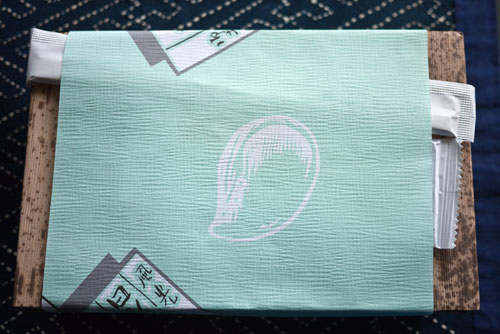
Open up the box...and it's full of seasonal tidbits. The marinated young ginger shoot dominates, and there's also young sweet carrot, baby eggplant, and early edamame. You may notice the stem of a young green bamboo leaf sticking out in the middle...
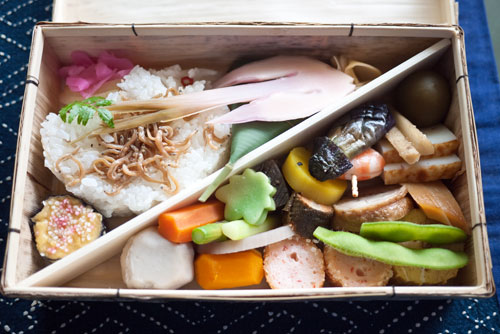
...that is a little packet, that contains...
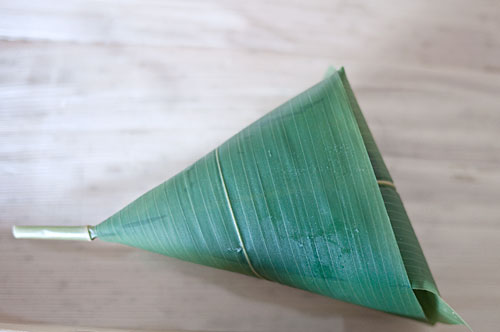
...a perfectly formed temarizushi, made with marinated white fish (I forgot to note down the kind of fish, sorry!).
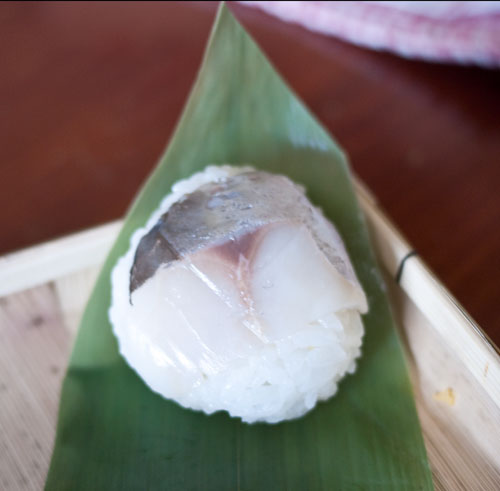
One more detail: every bento has to have a piece of tamagoyaki, and theirs is branded with their name in hiragana, saying higage. Note that the brand is on the cut side, so the chef has to slice the tamagoyaki and carefully brand each piece precisely. Wonderful.
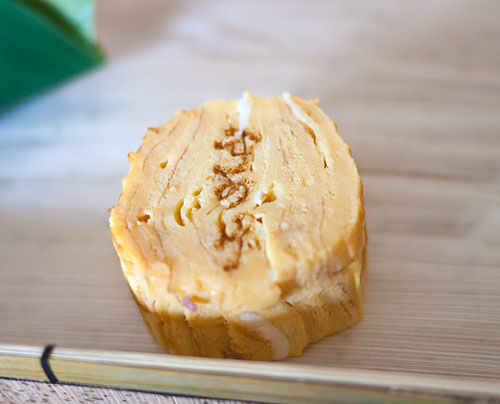
The prices for Hikagejaya's bentos range from around 2500 yen to 3500 yen - not cheap, but much more affordable than going to their restaurant. (Some fine-dining restaurant bentos are way more expensive, especially in Kyoto - but still cheaper than dining in!) As I've mentioned, many other restaurants sell bento lunches at local department stores (not necessarily from the restaurant premises themselves, though a few do). So, next time you're in Japan, keep an eye out for high-class bentos from top restaurants!
If you enjoyed this article, please consider supporting this site by becoming my patron via Patreon.
